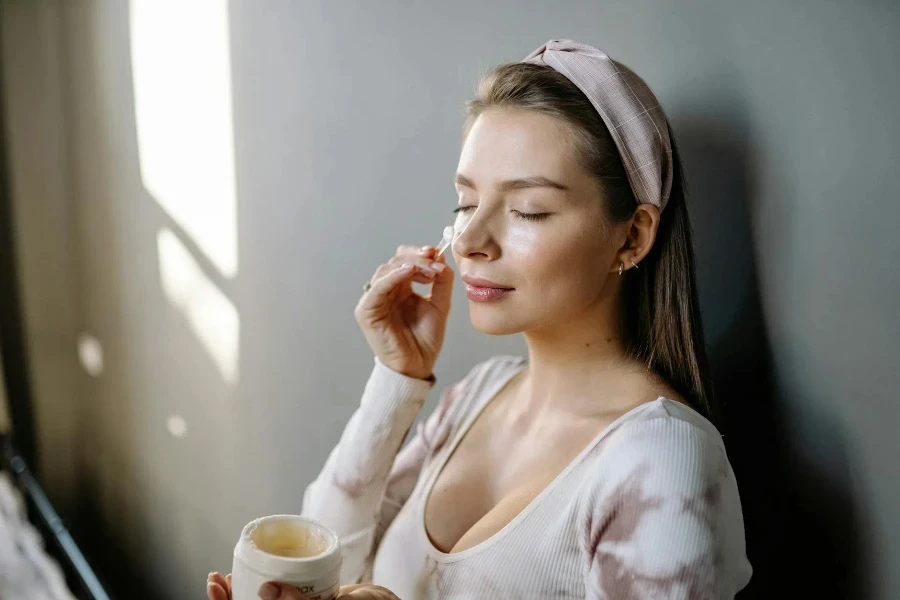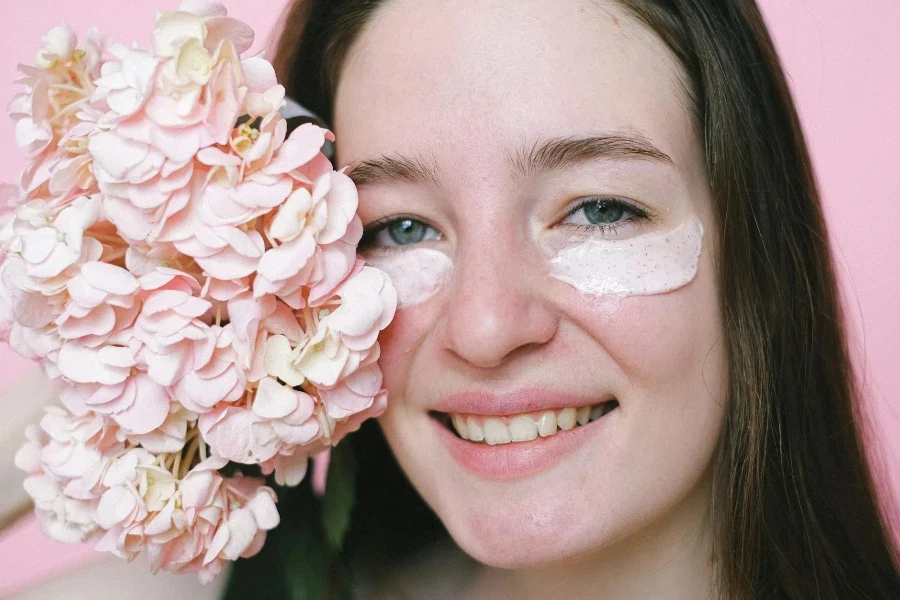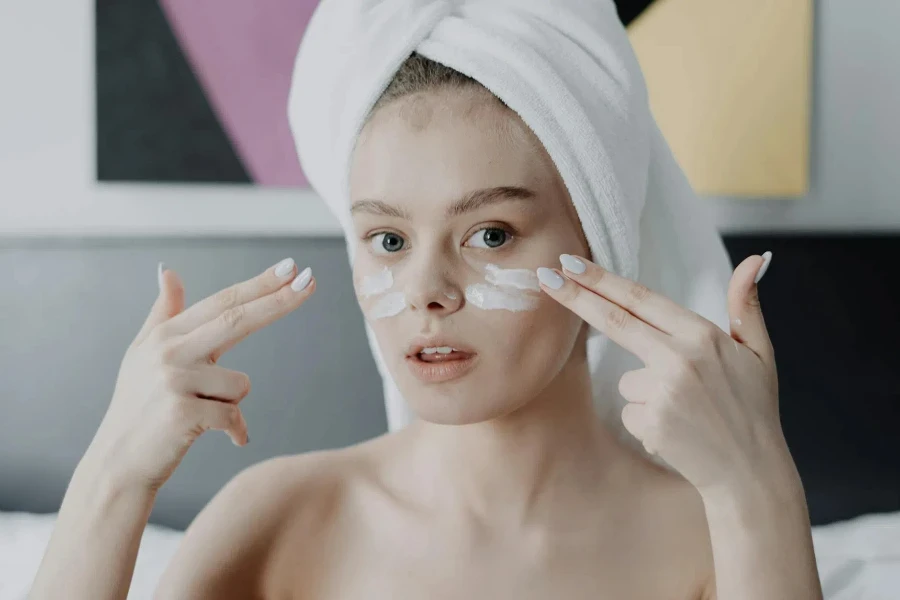In recent years, eye cream has transitioned from a niche product to a staple in many skincare routines. This shift is driven by increasing awareness of the delicate nature of the skin around the eyes and the desire to address specific concerns such as dark circles, puffiness, and fine lines. As consumers become more educated about skincare, the demand for targeted solutions like eye cream continues to grow.
Table of Contents:
– Market Overview: Understanding the Growing Demand for Eye Cream
– Anti-Aging Formulations: The Quest for Youthful Eyes
– Targeted Solutions: Addressing Specific Eye Area Concerns
– Innovative Packaging: Enhancing User Experience and Product Longevity
– Wrapping Up: Key Takeaways on Eye Cream Trends and Future Outlook
Market Overview: Understanding the Growing Demand for Eye Cream

The Evolution of Eye Cream: From Niche to Necessity
Eye cream has undergone a significant transformation over the past decade. Initially considered a luxury item, it has now become an essential part of many skincare regimens. This evolution is largely due to increased consumer awareness about the unique needs of the skin around the eyes, which is thinner and more prone to signs of aging. According to a report by Research and Markets, the global anti-aging products market, which includes eye creams, is expected to reach USD 61.71 billion by 2028, expanding at a CAGR of 5.4% from 2021 to 2028. This growth is fueled by rising consumer awareness of age-related skin issues and a willingness to invest in products that promise youthful skin.
Key Market Players and Their Influence on Trends
The eye cream market is dominated by several key players who have significantly influenced trends and consumer preferences. Companies like L’Oréal, Estée Lauder, and Shiseido have been at the forefront of innovation, introducing products that cater to various skin concerns. For instance, Estée Lauder’s Advanced Night Repair Eye Supercharged Complex has set a benchmark for anti-aging eye creams with its potent blend of ingredients designed to combat multiple signs of aging. These market leaders continuously invest in research and development to create advanced formulations that meet the evolving needs of consumers. According to a professional report, the face creams market, which includes eye creams, is projected to grow from $16.23 billion in 2023 to $26.24 billion in 2028, highlighting the significant role of these key players in driving market growth.
Consumer Demographics: Who’s Buying Eye Cream and Why
The demand for eye cream spans across various demographics, with a notable increase among younger consumers. Millennials and Gen Z are particularly inclined towards preventive skincare, seeking products that can delay the onset of aging signs. A report by Research and Markets indicates that the eye cream and lotion segment is expected to register the fastest CAGR of 6.6% from 2021 to 2028, driven by the increasing availability of customized products catering to the specific needs of the delicate eye area. Additionally, the aging population remains a significant consumer base, with individuals over 40 years old seeking solutions to address existing signs of aging such as fine lines and wrinkles. The growing middle-class population in regions like Asia-Pacific, coupled with increased purchasing power, further contributes to the rising demand for eye creams.
In conclusion, the eye cream market is experiencing robust growth, driven by evolving consumer preferences, innovative product offerings, and the influence of key market players. As awareness of skincare continues to rise, the demand for targeted solutions like eye cream is expected to remain strong, making it a vital component of modern skincare routines.
Anti-Aging Formulations: The Quest for Youthful Eyes

The pursuit of youthful eyes has led to significant advancements in anti-aging eye cream formulations. The market is brimming with innovative products that promise to reduce the signs of aging, such as fine lines, wrinkles, dark circles, and puffiness. This section delves into the breakthrough ingredients, the role of technology in enhancing eye cream efficacy, and the ongoing debate between natural and synthetic ingredients.
Breakthrough Ingredients: Retinol, Peptides, and Hyaluronic Acid
Retinol, peptides, and hyaluronic acid are the cornerstone ingredients in many anti-aging eye creams. Retinol, a derivative of vitamin A, is renowned for its ability to accelerate cell turnover and stimulate collagen production, thereby reducing the appearance of fine lines and wrinkles. Peptides, short chains of amino acids, play a crucial role in signaling the skin to produce more collagen and elastin, which are essential for maintaining skin firmness and elasticity. Hyaluronic acid, a powerful humectant, attracts and retains moisture in the skin, providing a plumping effect that diminishes the visibility of fine lines and keeps the delicate eye area hydrated.
The Role of Technology in Enhancing Eye Cream Efficacy
Technological advancements have revolutionized the efficacy of eye creams. According to a professional report, the integration of nanotechnology in skincare allows for the delivery of active ingredients at a deeper cellular level, enhancing their effectiveness. Additionally, the use of AI and machine learning in product formulation has enabled the creation of highly personalized skincare solutions. For instance, AI-powered diagnostic tools can analyze an individual’s skin type and concerns, recommending the most suitable eye cream formulations.
Consumer Preferences: Natural vs. Synthetic Ingredients
The debate between natural and synthetic ingredients continues to shape consumer preferences in the eye cream market. Natural ingredients, such as botanical extracts and essential oils, are favored for their perceived safety and minimal environmental impact. However, synthetic ingredients often offer more potent and consistent results. A report by WGSN highlights that consumers are increasingly seeking a balance between efficacy and sustainability, driving the demand for eye creams that combine the best of both worlds.
Targeted Solutions: Addressing Specific Eye Area Concerns

Eye creams are not one-size-fits-all; different formulations target specific concerns such as dark circles, puffiness, and fine lines. This section explores the ingredients and products that effectively address these issues.
Dark Circles: Ingredients and Products That Work
Dark circles are a common concern, often caused by factors such as genetics, lack of sleep, and aging. Ingredients like vitamin C, caffeine, and niacinamide are effective in brightening the under-eye area and reducing pigmentation. Vitamin C is a powerful antioxidant that lightens dark spots and boosts collagen production. Caffeine constricts blood vessels, reducing the appearance of dark circles and puffiness. Niacinamide, a form of vitamin B3, improves skin elasticity and enhances the skin barrier function.
Puffiness and Bags: Effective Formulations and Techniques
Puffiness and under-eye bags can result from fluid retention, allergies, or aging. Eye creams containing ingredients like caffeine, green tea extract, and peptides can help reduce swelling and improve skin firmness. Techniques such as using cold compresses or massaging the eye area with a roller can also enhance the effectiveness of these formulations by promoting lymphatic drainage and reducing fluid buildup.
Fine Lines and Wrinkles: Preventative and Corrective Measures
Preventing and correcting fine lines and wrinkles requires a combination of potent ingredients and consistent skincare routines. Retinol, peptides, and hyaluronic acid are key players in this arena. Preventative measures include using sunscreen to protect the delicate eye area from UV damage and maintaining a healthy lifestyle to support overall skin health. Corrective measures involve the regular application of eye creams with active ingredients that stimulate collagen production and improve skin elasticity.
Innovative Packaging: Enhancing User Experience and Product Longevity

Packaging plays a crucial role in the user experience and the longevity of eye cream products. This section examines the latest innovations in packaging that preserve product integrity, improve application, and meet consumer demand for sustainability.
Airless Pumps and Tubes: Preserving Product Integrity
Airless pumps and tubes are designed to protect eye cream formulations from exposure to air and contaminants, ensuring the product remains effective and hygienic. These packaging solutions prevent oxidation and degradation of active ingredients, extending the shelf life of the product. According to industry insights, airless packaging is particularly beneficial for formulations containing sensitive ingredients like retinol and vitamin C.
Applicator Innovations: Rollers, Wands, and Beyond
Innovative applicators such as rollers, wands, and precision tips enhance the application process, making it more efficient and enjoyable. Rollers, often made of metal or jade, provide a cooling effect that helps reduce puffiness and improve product absorption. Wands with precision tips allow for targeted application, ensuring the product is evenly distributed and minimizing waste. These applicators not only improve the efficacy of the eye cream but also offer a luxurious user experience.
Sustainable Packaging: Meeting Consumer Demand for Eco-Friendly Options
Sustainability is a growing concern among consumers, driving the demand for eco-friendly packaging solutions. Brands are increasingly adopting recyclable materials, biodegradable options, and refillable containers to reduce their environmental footprint. A report by WGSN highlights that sustainable packaging is not only beneficial for the planet but also enhances brand loyalty and consumer trust. By prioritizing sustainability, brands can appeal to environmentally conscious consumers and differentiate themselves in a competitive market.
Wrapping Up: Key Takeaways on Eye Cream Trends and Future Outlook

The eye cream market is evolving rapidly, driven by advancements in ingredient technology, consumer preferences, and innovative packaging solutions. The integration of breakthrough ingredients like retinol, peptides, and hyaluronic acid, combined with cutting-edge technology, is enhancing the efficacy of eye creams. Addressing specific eye area concerns with targeted formulations and techniques is crucial for meeting diverse consumer needs. Innovative packaging solutions that preserve product integrity, improve application, and prioritize sustainability are shaping the future of the market. As the demand for effective and eco-friendly eye creams continues to grow, brands that stay ahead of these trends will be well-positioned for success.”





 বাংলা
বাংলা Nederlands
Nederlands English
English Français
Français Deutsch
Deutsch हिन्दी
हिन्दी Bahasa Indonesia
Bahasa Indonesia Italiano
Italiano 日本語
日本語 한국어
한국어 Bahasa Melayu
Bahasa Melayu മലയാളം
മലയാളം پښتو
پښتو فارسی
فارسی Polski
Polski Português
Português Русский
Русский Español
Español Kiswahili
Kiswahili ไทย
ไทย Türkçe
Türkçe اردو
اردو Tiếng Việt
Tiếng Việt isiXhosa
isiXhosa Zulu
Zulu